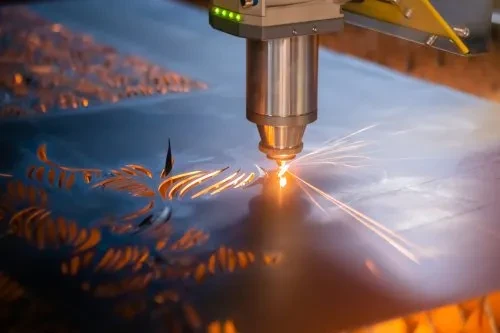이메일 형식 오류
emailCannotEmpty
emailDoesExist
pwdLetterLimtTip
inconsistentPwd
pwdLetterLimtTip
inconsistentPwd

소식
Common Operating Methods of CNC Milling
CNC milling is a machining process suitable for producing high-precision, high-tolerance parts in prototype, one-off, and small to medium production runs. While parts are typically manufactured to tolerances ranging from +/- 2 filaments to +/- 10 filaments, some milling machines can achieve tolerances as high as +/- 1 filament or even higher. The versatility of the milling process allows it to be used in a wide range of industries and for a variety of part features and designs, including slots, chamfers, threads and pockets. The most common CNC milling operations include:
- Face milling
- Planar milling
- Angular milling
- Form milling

Face milling
Face milling in which the axis of rotation of the cutting tool is perpendicular to the workpiece surface. This method uses a face mill that has teeth on both the perimeter and the tool face, where the perimeter teeth are primarily used for cutting and the face teeth are used for finishing applications. Typically, face milling is used to create flat surfaces and contours on the finished part and is capable of producing a higher quality finish than other milling processes. Both vertical and horizontal milling machines support this process.
Types of face milling include end mills and side mills, which use end mills and side mills, respectively.
Planar milling
Face milling, also known as face milling or slab milling, in which the axis of rotation of the cutting tool is parallel to the surface of the workpiece. The process uses ordinary milling cutter teeth to perform cutting operations at the periphery. Depending on the specifications of the milling application, such as depth of cut and workpiece size, narrow and wide cutters are available. Narrow knives allow for deeper cuts, while wide knives can be used to cut larger surface areas. If a face milling application requires the removal of a large amount of material from a workpiece, the operator begins by using a coarse-tooth cutter, slow cutting speeds and fast feed rates to produce the approximate geometry of the custom-designed part. Operators then introduce finer-toothed cutters, faster cutting speeds and slower feed rates to produce the details of the finished part.
Angle milling
Angle milling is where the axis of rotation of the cutting tool is at an angle relative to the workpiece surface. The process uses single-angle milling cutters (angled according to the specific design being machined) to create angular features such as chamfers, serrations, and grooves. A common application for angle milling is the production of dovetails, which use 45°, 50°, 55° or 60° dovetail cutters depending on the design of the dovetail.
Form milling
Profile milling refers to milling operations involving irregular surfaces, contours and profiles, such as parts with curved and flat surfaces or fully curved surfaces. The process employs profile or fly cutters designed for specific applications, such as convex, concave and corner fillet cutters. Some common applications for form milling include the production of hemispherical and semicircular cavities, beads and profiles, as well as complex designs and intricate parts from a single machine setup.
Conclusion
For more information about cnc milling machine shop,cnc machine milling price,used 5 axis cnc milling machine for sale, we are glad to answer for you.

